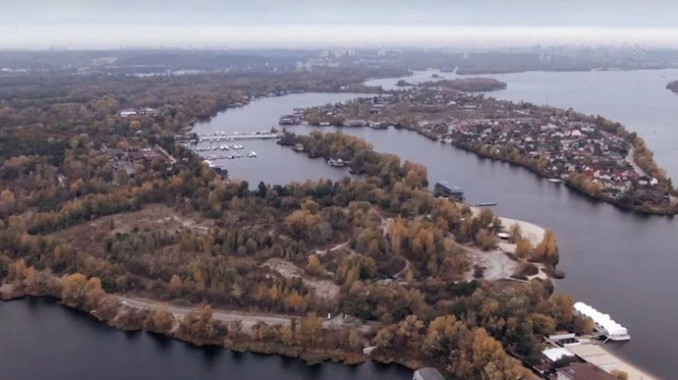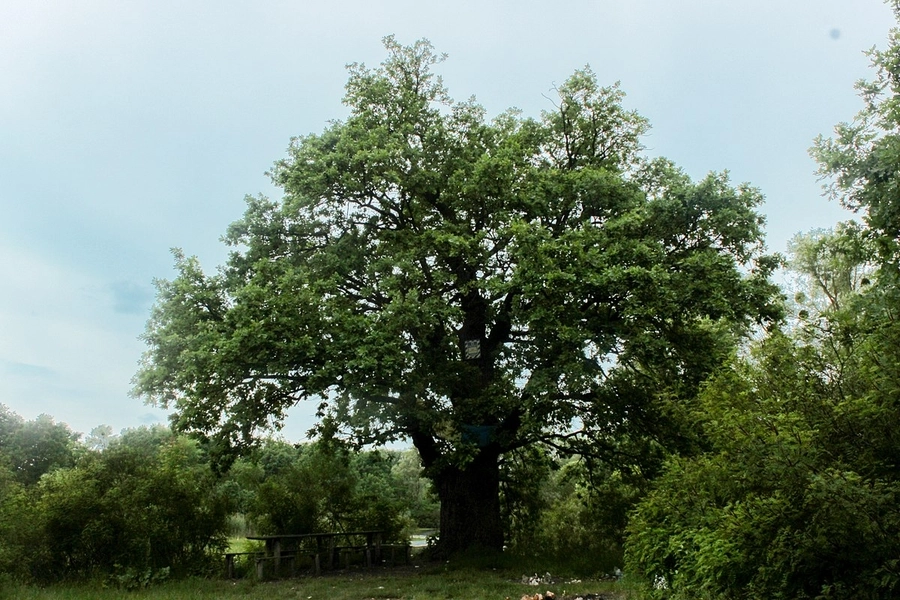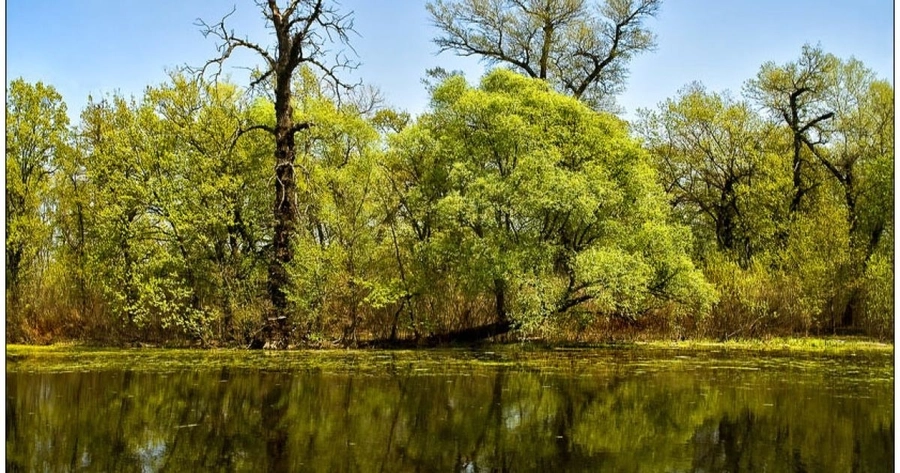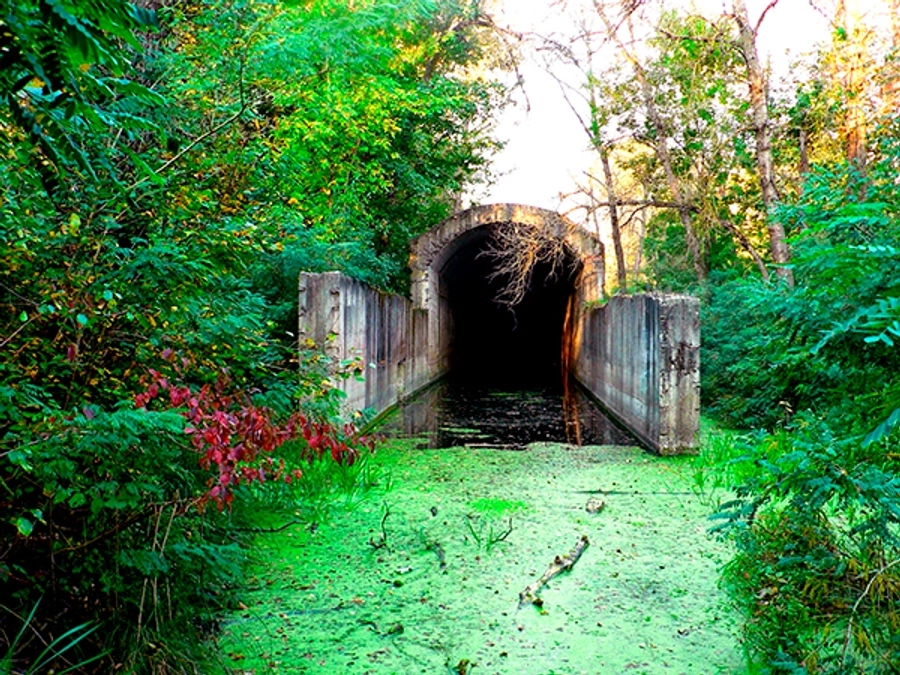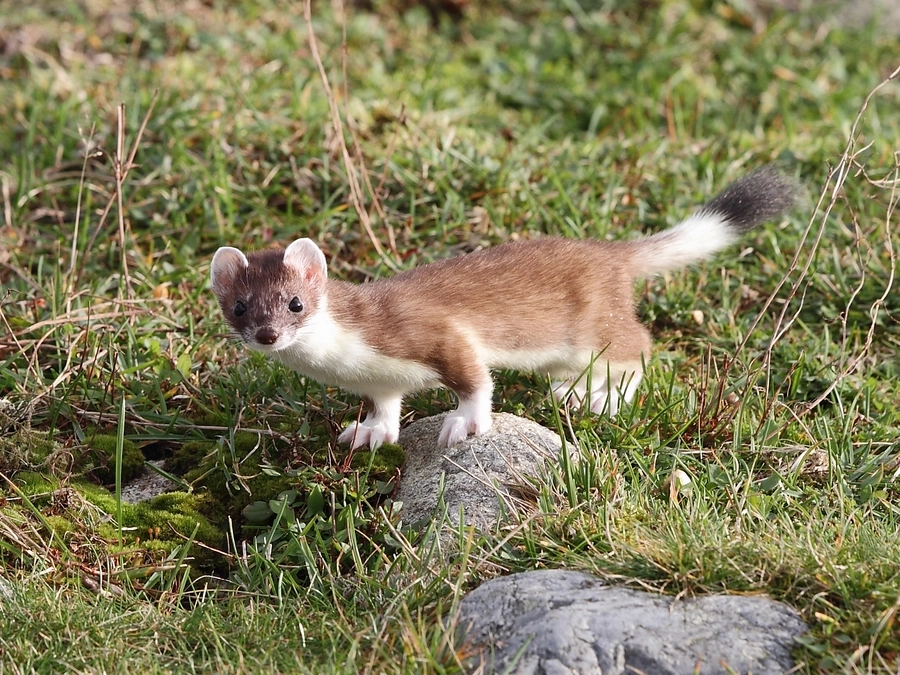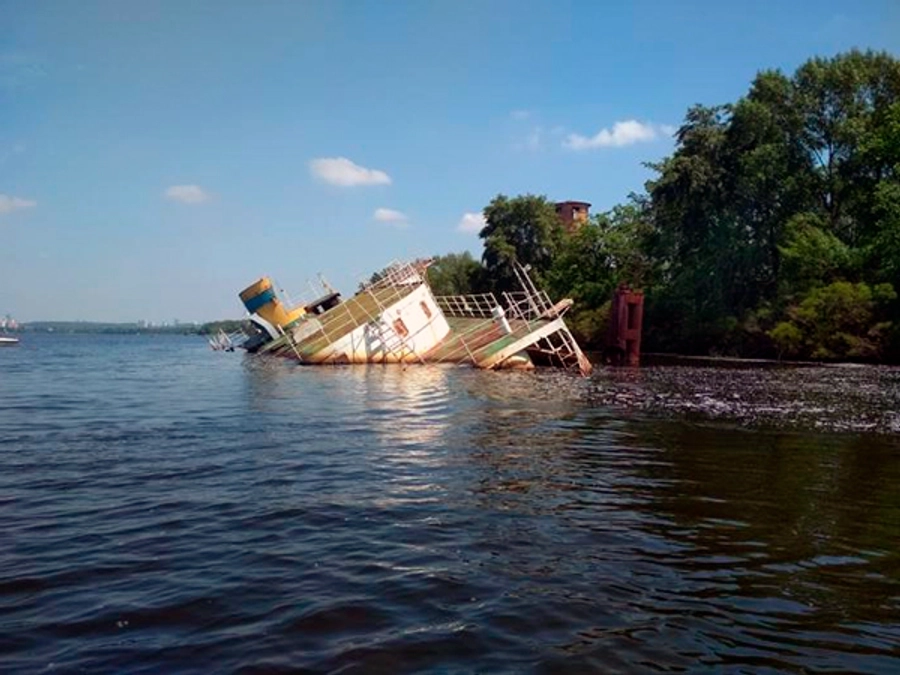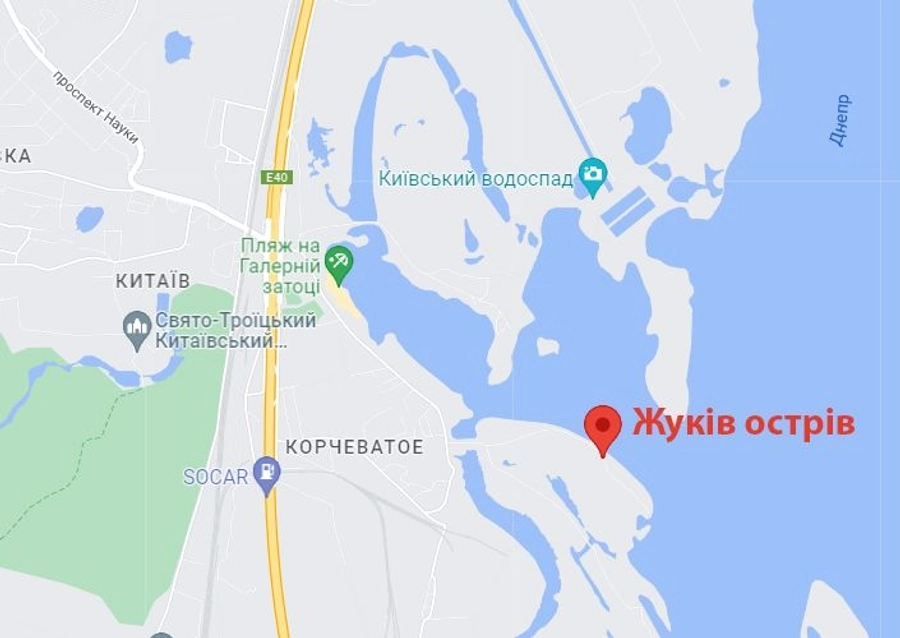The capital of Ukraine can boast a large number of islands of various sizes, but one of them is special because only there you can see rare animals in the wild – ermines – and not only them. Zhukiv Island is a valuable nature reserve, where ecologists managed to preserve the pristine nature of Kyiv region on 1,630 hectares.
JOIN US ON TELEGRAM
Follow our coverage of the war on the @Kyivpost_official.
Zhukiv Island got its name from the small river Zhukivka, which runs through it and flows into the Dnipro River. People call this river simply Zhuchka. Once upon a time, there were hunting grounds there, where the Kyiv nobility organized hunts. This place remembers the heroic history of our people because at one time there was a strategic point there, which the army of Bohdan Khmelnytsky recaptured from the Poles. Later, this territory passed to the possessions of the Kyiv-Pechersk Lavra. In 1869, a wooden church of the Icon of the Mother of God "Recovery of the Dead" was built on the island. It was also subordinate to the Lavra. Unfortunately, in the 1930s the church was destroyed, while construction began in its place, which brought the island special fame.
What is interesting about Zhukiv Island is that in the late 1930s the secret construction of a railway tunnel under the Dnipro River was carried out there. The building of facility No. 1 – or the Stalin Railway Tunnel – began in 1936 with the aim of creating a convenient transfer from the island to the Osokorky residential area, which, if necessary, was supposed to replace the bridge over the Dnipro. It was a large-scale construction. Some 12,000 workers were involved in the project, and a ship repair base was set up on the Dnipro.
All this lasted until 1941. When the Second World War began, the construction was suspended and then the object was recognized as obsolete. In 1974, with the start of work of Kaniv HPP, the water level in the river rose, flooding the tunnel. The object was abandoned and remained unfinished. Today, this 750-meter-long tunnel remains partially submerged, but despite this explorers of Kyiv region love to go there.
Thanks to ecologists, the natural environment of Zhukiv Island remained almost untouched: there are many species of flora and fauna listed in the Red Data Book of Ukraine. In particular, there are about 120 species of rare plants and more than 30 species of fish. If you behave quietly, here you can see a white-tailed eagle, an ermine, a wide variety of mammals, including otters, muskrats, beavers, raccoon dogs, weasels, and stone martens. Migratory birds do stop on Zhukiv Island. In addition, there is a unique 20-meter oak, which is about 500 years old, with an icon placed on it. Its trunk reaches 6.1 meters in girth. The tree has the status of a botanical monument of nature and is one of the oldest oaks in Kyiv. It even has its own name – the Oak on Blue Water.
Another interesting thing that can be seen on the island is the half-submerged 75-meter-long ghost ship Captain Ostapenko, which ran aground closer to the neighboring Vodnykiv Island. The ship was built in Bulgaria in 1954 and for some time was used as a training base for sailors. In 2013, the ship was spotted in the Dnipro waterway without a crew and signal lights. It could not be stopped for a long time and simply drifted. When the ship ran aground, rescuers on a tug towed it to Vodnykiv Island and moored it. Subsequently, a hole appeared in its hull, the Captain Ostapenko tilted to one side and partially sank. It is still there and is one of the favorite places to have a meeting for local stalkers.
As you can see, there are many unusual things to see there. Zhukiv Island is located in the south of the Holosiyivsky district of Kyiv, on the right bank of the Dnipro River between the Konyk in Korchuvate historical area (extending along Stolychne Highway Street) and Vodnykiv Island. It would be best to get there by your own transport (or hitchhike) along Stolychne Highway Street to Lisnychna Street, and walk along it for about 4 kilometers to the Dniprovska Riviera restaurant.
You can also highlight the text and press Ctrl + Enter



